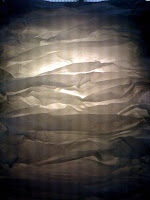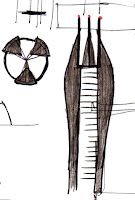


Skins protect what is inside. Our skin is even considered an organ, moving, healing, extracting absorbing. Cars have shiny metal (or plastic) skins that protect their insides. Lamps have skins that protect our eyes from the direct light and protect kids from touching hot light bulbs. Even fruits and vegetables have skin that protects them. Trees, waterbottles, eggs, batteries, earth, turtles, cells all have skin that protect, react and perform. A building should do the same.
Pith cells of the cavity membrane in Phyllostachys viridiglaucescens act in a way that allows penetration of only accepted material. The wavy, irregular structure is useful for hiding the seams within the cavity. Similarly, the skin of a building can do the same... allowing only accepted materials within the skin. Air, light, water, sound?
Here, a magnetic curtain is developed and used indoors to do just this... with light.

















